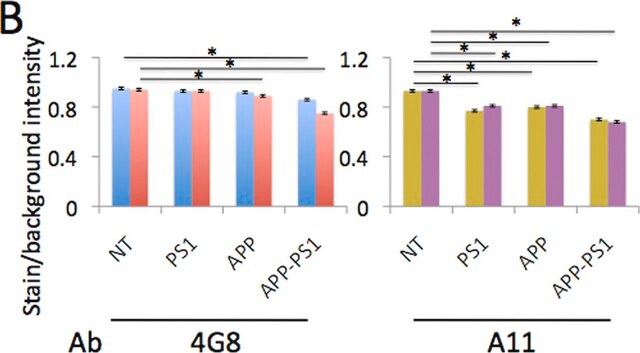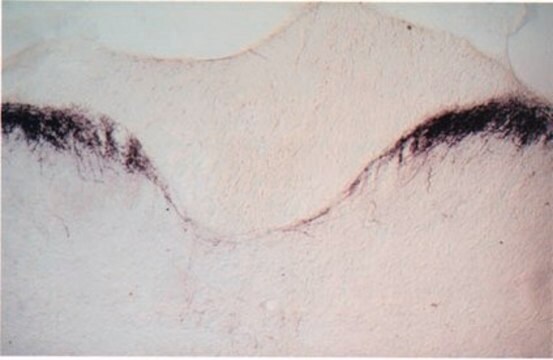AB2287
Anti-Amyloid Fibrils LOC Antibody
serum, Chemicon®
Sinonimo/i:
Amyloid Fibrils, Amyloid Fibrils LOC
About This Item
Prodotti consigliati
Origine biologica
rabbit
Livello qualitativo
Forma dell’anticorpo
serum
Tipo di anticorpo
primary antibodies
Clone
polyclonal
Reattività contro le specie
human
Reattività contro le specie (prevista in base all’omologia)
mouse, rat
Produttore/marchio commerciale
Chemicon®
tecniche
ELISA: suitable
dot blot: suitable
immunocytochemistry: suitable
immunohistochemistry: suitable
immunoprecipitation (IP): suitable
western blot: suitable
Isotipo
IgG
N° accesso NCBI
N° accesso UniProt
Condizioni di spedizione
wet ice
modifica post-traduzionali bersaglio
unmodified
Informazioni sul gene
human ... APP(351)
mouse ... App(11820)
Descrizione generale
Specificità
Immunogeno
Applicazioni
Qualità
Dot Blot Analysis: 1:1,000 dilution of this antibody detected Amyloid fibrils in fibrils and monomers but not in prefibril oligos. A 1:5,000 dilution, as cited in Glabe C., et al. (2007) Mol Neurodegener 2, 18 shows that the binding with monomers is likely non-specific, and is a possible result of high primary antibody concentration.
Stoccaggio e stabilità
Handling Recommendations: Upon receipt and prior to removing the cap, centrifuge the vial and gently mix the solution. Aliquot into microcentrifuge tubes and store at -20°C. Avoid repeated freeze/thaw cycles, which may damage IgG and affect product performance. After thawing, store at 4°C in 0.02% sodium azide.
Note legali
Not finding the right product?
Try our Motore di ricerca dei prodotti.
Codice della classe di stoccaggio
10 - Combustible liquids
Classe di pericolosità dell'acqua (WGK)
WGK 1
Certificati d'analisi (COA)
Cerca il Certificati d'analisi (COA) digitando il numero di lotto/batch corrispondente. I numeri di lotto o di batch sono stampati sull'etichetta dei prodotti dopo la parola ‘Lotto’ o ‘Batch’.
Possiedi già questo prodotto?
I documenti relativi ai prodotti acquistati recentemente sono disponibili nell’Archivio dei documenti.
Il team dei nostri ricercatori vanta grande esperienza in tutte le aree della ricerca quali Life Science, scienza dei materiali, sintesi chimica, cromatografia, discipline analitiche, ecc..
Contatta l'Assistenza Tecnica.







